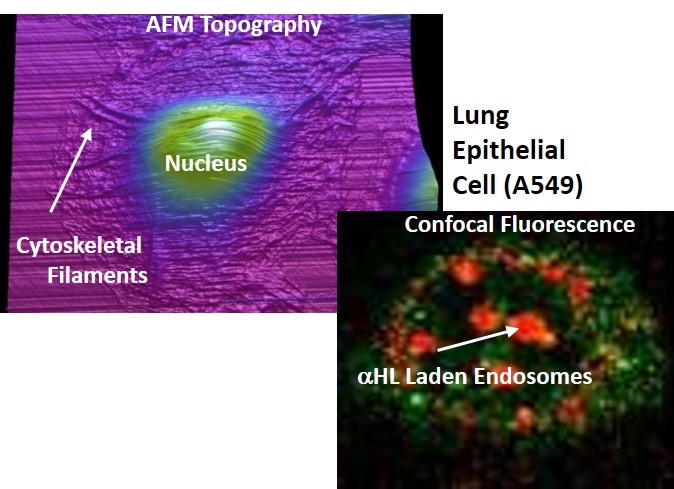Probing Cell Membrane Biochemistry and Biophysics
Infections of Staphylococcus aureus, including methicillin-resistant Staphylococcus aureus (MRSA), continue to pose significant health risks in the US and around the globe. In addition to an array of soft tissue and bloodborne infections that are characterized by necrosis and inflammation, these bacterial strains are a growing cause of pneumonia in adult and pediatric populations. Our studies target cell death induced by alpha hemolysin (αHL), a pore-forming protein toxin produced by S. aureus and one of its major virulence factors. The work represents a basic trajectory of research that seeks to illuminate the interconnectedness of mechanotransduction (the conversion of macroscopic mechanical stimuli into chemical activity) and chemotransduction (the conversion of chemical reactivity into mechanical change) for a wide array of cells and tissues. Understanding this interplay, more generally, may lead to new therapeutic approaches for toxin exposure throughout the body. Shown here is an image of fluorescently labeled αHL being engulfed by cellular endosomes. Peak force quantitative nanomechanical mapping (PF-QNM) atomic force microscopy (AFM) is used to determine cell and membrane mechanical alterations in response to attack by αHL.


